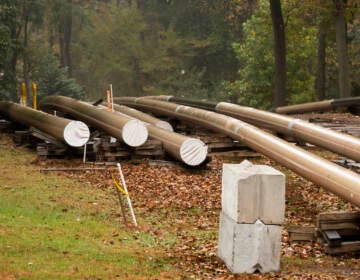Novel taps into the backlash over McMansions
Twenty-five years ago, Princeton’s Littlebrook neighborhood offered middle-class living on tree-lined streets. In 1950s ranch-style houses, children did homework on the kitchen table, practiced piano in the living room, and blew out candles on home-made cakes with butter cream frosting at birthday parties in the backyard.
Today, many neighborhoods like Littlebrook have been completely transformed, with houses of McMansion proportions. Some offer stone facades suggestive of castles, three- and four-car climate-controlled garages, seven bedrooms and glass enclosed pergolas.
In the past 25 years, the average American home size has grown significantly. In May a National Association of Realtors report noted the sales of luxury homes valued at $1 million or more rose 7.8 percent since March 2013, while homes selling for $250,000 or less fell 12 percent in the same time period. Split levels, once considered part of the suburban dream, are routinely torn down and replaced with a house that takes up as much space as zoning will allow. And builders often seek changes to zoning ordinances to build bigger McMansions.
Author, translator, Greek poetry scholar and Princeton University Professor Emeritus Edmund Keeley tackles this issue in his newest novel, “The Megabuilders of Queenston Park,” published by the Lambertville-based independent Wild River Books. Joyce Carol Oates has called it a deftly written “contemporary comedy of manners.”
Set in present-day suburban Princeton, with its architecturally distinct buildings, the book’s “megabuilders” roam neighborhoods in search of modest homes to tear down. When a smooth-talking real estate developer tries to convince Cassie Mandeville to sell her beloved home and property, she and her husband Nick decide to take action. Nearing retirement, Cassie and Nick find themselves thrust into a battle with a father-and-son construction company that plans to erect an overgrown, high-end eyesore next door and convince the Mandevilles to sell their home as a teardown. As the couple tries to save their neighborhood, they run headlong into an insensitive and possibly corrupt local government as they navigate the maze of community zoning.
“The Megabuilders of Queenston Park” brings to life unsettling environmental questions that plague many families and communities, large and small. What is the true value of real estate? How do we measure the stability and familial loyalty our homes nurture and shelter? How do we protect our neighborhoods from large-scale development, construction, pollution and sewage run-off?
In the opening chapter, Cassie recalls a visiting writer who referred to Princeton as a sleepy town. She takes us through the history of Princeton’s neighborhoods – the historic African-American John Witherspoon neighborhood; the wealthier neighborhoods surrounding Morven, Drumthwacket and the Institute for Advanced Study. Her own neighborhood is the fictitious “Queenston Park,” a more recently developed area of ranches and split levels.
And while the houses in Queenston Park might be modest, the lots are not, with large trees left from the farms that once existed here.
Keeley writes of the houses they are being replaced with: “made out of pre-fabricated sections, rectangular boxes piled up on top of each other and nailed together, with no connection to what was already in the neighborhood… with five or six bedrooms, some with five or six baths, three garages…” Smaller houses are disposed of like the male chicks at factory farms – it’s all part of the same disposable culture.
As mega mansions proliferate in their neighborhood, leading to more impervious surfaces, the Mandevilles find the small stream behind their house flooding. Plastic water bottles and blue newspaper bags, even lawn furniture, float up in backyards. The Mandevilles believe in the Indian tenet that no one owns the land, each generation is here to care for the land.
Life resembles art, or art incorporates life experiences. Keeley, 86, who was president of PEN American Center from 1992-1994 and earned the Rome Prize of the American Academy of Arts and Letters for his first novel, “The Libation,” moved to Tyson Road in Princeton’s Littlebrook section with his Greek wife, Mary, in 1954. The house was small so they sought architect Michael Graves to design an addition that included a study and master bedroom. The project proved too costly for a young professor’s salary, and was ultimately completed by a contractor. “Megabuilders” grew out of Keeley’s experiences when the house next door was razed by developers and a new modular house was erected in a day, six feet from his property line.
When Keeley’s wife died, he grew lonely and moved to Princeton Windrows, the retirement community in nearby Plainsboro – a mega building, for sure, to the previous caregivers for that land. To make matters worse, his own house ultimately suffered the fate of the house next door, in the hands of the people he sold it to.
Says the developer to the fictional Mandevilles: “I understand how you and a few others around here feel, but I’m afraid you’re all living in dream land. I promise you, if it isn’t Solar Estates working to revitalize the neighborhood, it will be somebody else moving in for their own kind of upgrading. The lots in your neighborhood arejust too valuable and — forgive me — the houses are too old and small. Someday soon they will have to come down, and I’m afraid that includes yours.”
________________________________________
The Artful Blogger is written by Ilene Dube and offers a look inside the art world of the greater Princeton area. Ilene Dube is an award-winning arts writer and editor, as well as an artist, curator and activist for the arts.
WHYY is your source for fact-based, in-depth journalism and information. As a nonprofit organization, we rely on financial support from readers like you. Please give today.




















